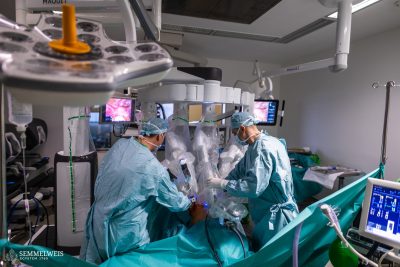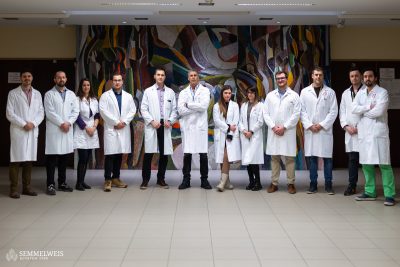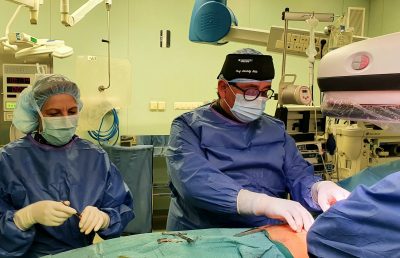Research that can immediately be implemented in patient care is being carried out by a research group of two people at the Department of Neurology within the framework of the Hungarian Brain Research Programme. Dr. Zsuzsanna Arányi, associate professor and leader of the team and Dr. Anita Csillik, assistant lecturer and PhD student conduct studies of the peripheral nervous system with ultrasound and electromyography. The new combined diagnostic method increases the patient’s chance of recovery as it improves diagnostic sensitivity and indicates when surgery is needed to treat paralysis or functional deterioration. The results of the programme have been published in several Hungarian and international scientific journals, such as the Muscle and Nerve, and Clinical Neurophysiology.
Using the new ultrasound device the researchers conduct high resolution ultrasound studies of the so-called peripheral nerves running on the neck, torso and limbs as part of their usual clinical work with the involvement of patients suffering from diseases of the peripheral nervous system.
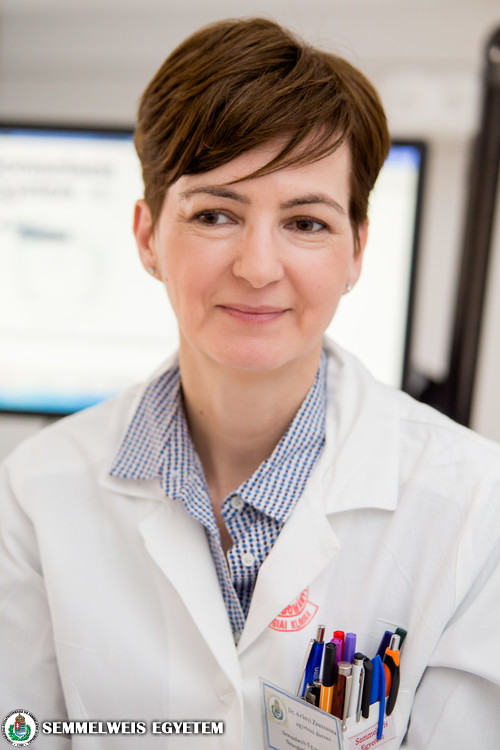 “The ultrasound exams are combined with electrophysiologic tests because nerves can be studied in two ways: the function of nerves can be studied with the help of electric stimulation and their imaging and morphologic study is possible with ultrasound.”, Dr. Zsuzsanna Arányi said.
“The ultrasound exams are combined with electrophysiologic tests because nerves can be studied in two ways: the function of nerves can be studied with the help of electric stimulation and their imaging and morphologic study is possible with ultrasound.”, Dr. Zsuzsanna Arányi said.
Imaging studies of nerves had not been widely used in neurology, therefore the use of ultrasound was a breakthrough. The research group mainly focus on carpal tunnel syndrome (around the wrists), thoracic outlet syndrome (TOS) and the Parsonage-Turner syndrome, which is an inflammatory disease causing pain in the shoulders or arms as a result of damaged nerves in the upper limbs.
“Our results have shown so far that all of the peripheral nerve disorders have characteristic ultrasound signals.”, Dr. Zsuzsanna Arányi said.
The most common disease of the peripheral nervous system is the carpal tunnel syndrome, which causes a painful tingling sensation of the hand at nigh accompanied by clumsiness during the day. It is caused by the compression of the median nerve as it travels through the wrist. The research group managed to identify the swelling of the affected nerve in the palm after exiting the tunnel, which is a new diagnostic parameter of the disease.
Another tunnel syndrome is the compression of the neurovascular bundle in the passageway from the lower neck to the chest, presenting with pain in the arm, weakness and loss of muscles at the base of the thumb. This condition is usually caused by congenital anatomical disorders, a cervical rib, or extra muscles and ligaments. The imaging study of the disease had not been possible before.
“Our research group was the first to identify the characteristic ultrasound signal of the thoracic outlet syndrome, the so called wedge-sickle sign, which shows the position and cause of the compression of the neurovascular bundle. This may help with an early diagnosis, thus preventing the development of severe and irreversible symptoms, such as the loss of hand muscles.”, Dr. Zsuzsanna Arányi said.
In case of the Parsonage-Turner syndrome, contrary to the tunnel syndromes, nerve damage is not caused by compression but inflammation. Up till now diagnosis was based on symptoms but now the ultrasound enables the imaging study of the disease.
“Our research group was the first to identify the disease’s characteristic deviations on ultrasound, such as the swelling of nerves, their constriction and the twisting of the nerve at the place of the constriction. This helps making the medical diagnosis and the recovery of the patients.”, Dr. Zsuzsanna Arányi said.
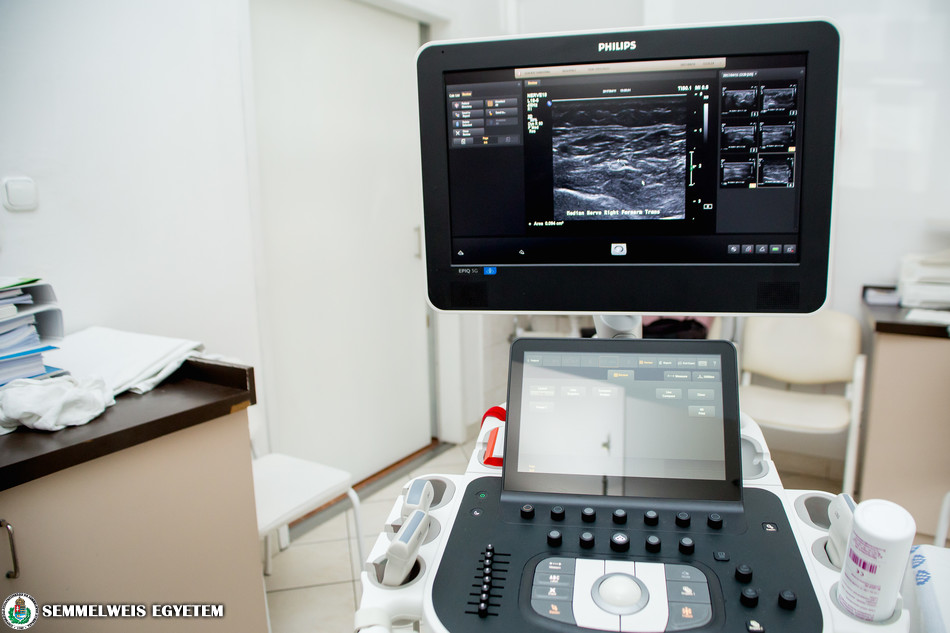 In case of a grave constriction or nerve twisting identified by ultrasound, recovery cannot be expected without surgical intervention and the patients’ arm function may remain damaged. Significant improvement have already been achieved in case of several patients, which is also the merit of the hand surgeons, who performed the first operation of this kind in Hungary.
In case of a grave constriction or nerve twisting identified by ultrasound, recovery cannot be expected without surgical intervention and the patients’ arm function may remain damaged. Significant improvement have already been achieved in case of several patients, which is also the merit of the hand surgeons, who performed the first operation of this kind in Hungary.
“As the main objective of our research is immediate applicability in patient care, in the long run we would like the ultrasound method to be put in practice nationwide as a basic neurological examination for a better diagnosis and more efficient treatment of diseases of the peripheral nervous system.”, said Dr. Zsuzsanna Arányi.
The methodology and the research results have been presented at various scientific events and practical education is provided for physicians in clinics. The project ends at the end of the year but the device remains at the Department of Neurology, enabling the continuation and the extension of research to other areas as well.
Eszter Keresztes
Photo: Attila Kovács, Semmelweis University
Translation: Ágnes Raubinek
